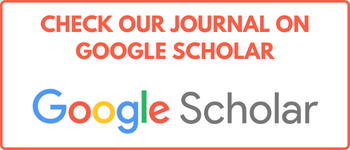Digital technology has advanced quickly in the twenty-first century, changing how people communicate, connect, and access information. Digital literacy and cyber socialization have emerged as essential abilities for people to flourish in the virtual age due to the rise of virtual devices and the internet. Cyber socialization refers to how people interact, communicate, and forge relationships in online spaces, while digital literacy refers to the capacity to successfully access, contrast, comprehend, and use digital information and communication technologies (ICTs). In the context of the twenty-first century, this research paper seeks to identify the norms of virtual literacy and cyber socialization, emphasizing their significance and ramifications for individuals, groups, and society as a whole.
An Overview Of Digital Literacy And Cyber Socialization In The Educational Scenario Of 21st Century
Publication Information
Journal Title: Asian Journal of Multidisciplinary Research & Review
Author(s): Chiranjibi Behera & Joy Prakash Deb
Published On: 03/05/2023
Volume: 4
Issue: 2
First Page: 70
Last Page: 78
ISSN: 2582-8088
Publisher: The Law Brigade Publisher
Cite this Article
Chiranjibi Behera & Joy Prakash Deb, An Overview Of Digital Literacy And Cyber Socialization In The Educational Scenario Of 21st Century, Volume 4 Issue 2, Asian Journal of Multidisciplinary Research & Review, 70-78, Published on 03/05/2023, Available at https://ajmrr.thelawbrigade.com/article/an-overview-of-digital-literacy-and-cyber-socialization-in-the-educational-scenario-of-21st-century/
Abstract
Share this research
Latest Publications

License Information
Copyright © 2024
Chiranjibi Behera & Joy Prakash Deb

Ownership and Licensing:
Authors of this research paper submitted to the Journal of Science & Technology retain the copyright of their work while granting the journal certain rights. Authors maintain ownership of the copyright and have granted the journal a right of first publication. Simultaneously, authors agreed to license their research papers under the Creative Commons Attribution-NonCommercial-ShareAlike 4.0 International (CC BY-NC-SA 4.0) License.
License Permissions:
Under the CC BY-NC-SA 4.0 License, others are permitted to share and adapt the work, as long as proper attribution is given to the authors and acknowledgement is made of the initial publication in the Journal of Science & Technology. This license allows for the broad dissemination and utilization of research papers.
Additional Distribution Arrangements:
Authors are free to enter into separate contractual arrangements for the non-exclusive distribution of the journal’s published version of the work. This may include posting the work to institutional repositories, publishing it in journals or books, or other forms of dissemination. In such cases, authors are requested to acknowledge the initial publication of the work in the Journal of Science & Technology.
Online Posting:
Authors are encouraged to share their work online, including in institutional repositories, disciplinary repositories, or on their personal websites. This permission applies both prior to and during the submission process to the Journal of Science & Technology. Online sharing enhances the visibility and accessibility of the research papers.
Responsibility and Liability:
Authors are responsible for ensuring that their research papers do not infringe upon the copyright, privacy, or other rights of any third party. The Journal of Science & Technology and The Science Brigade Publishers disclaim any liability or responsibility for any copyright infringement or violation of third-party rights in the research papers.




